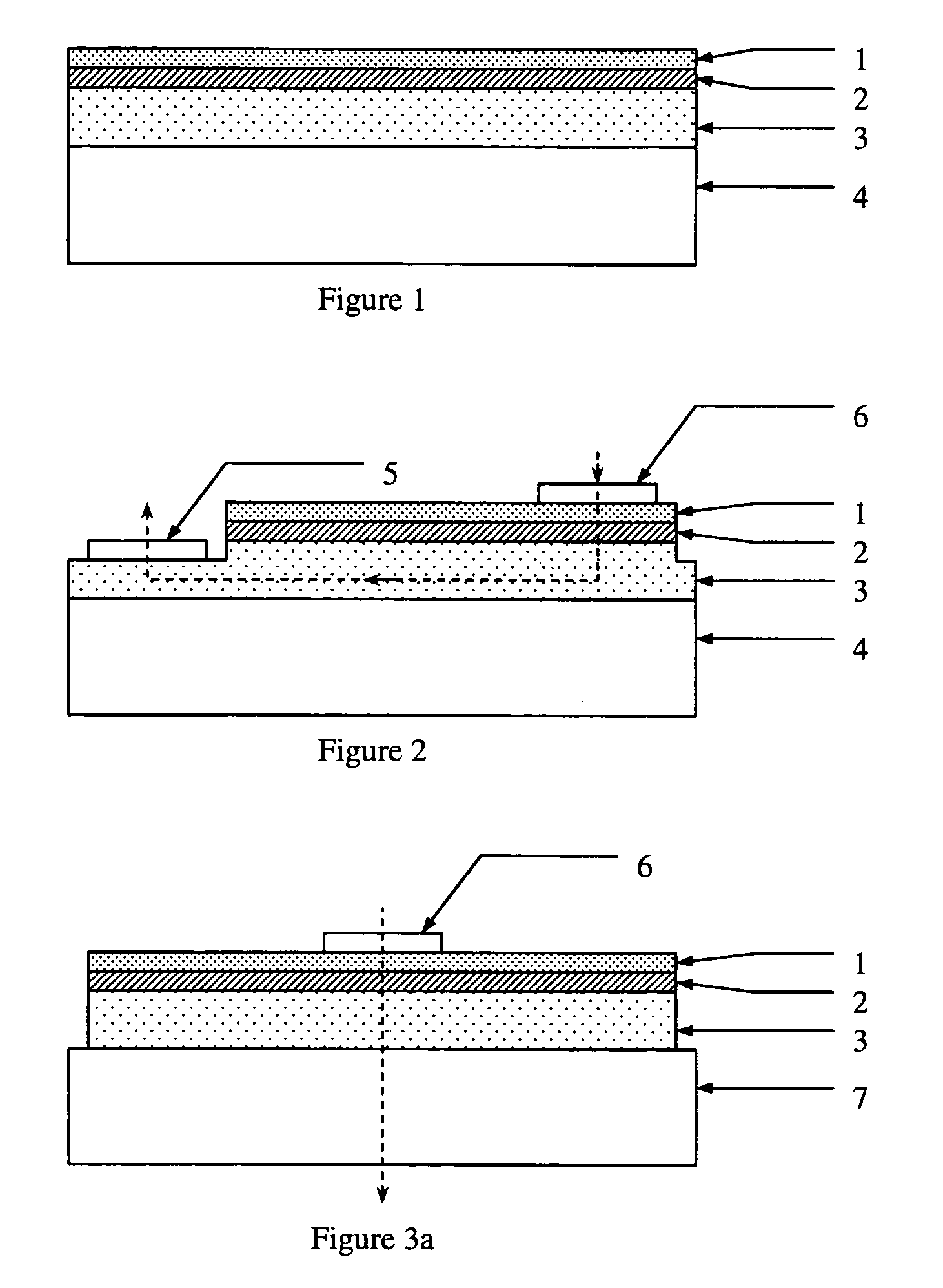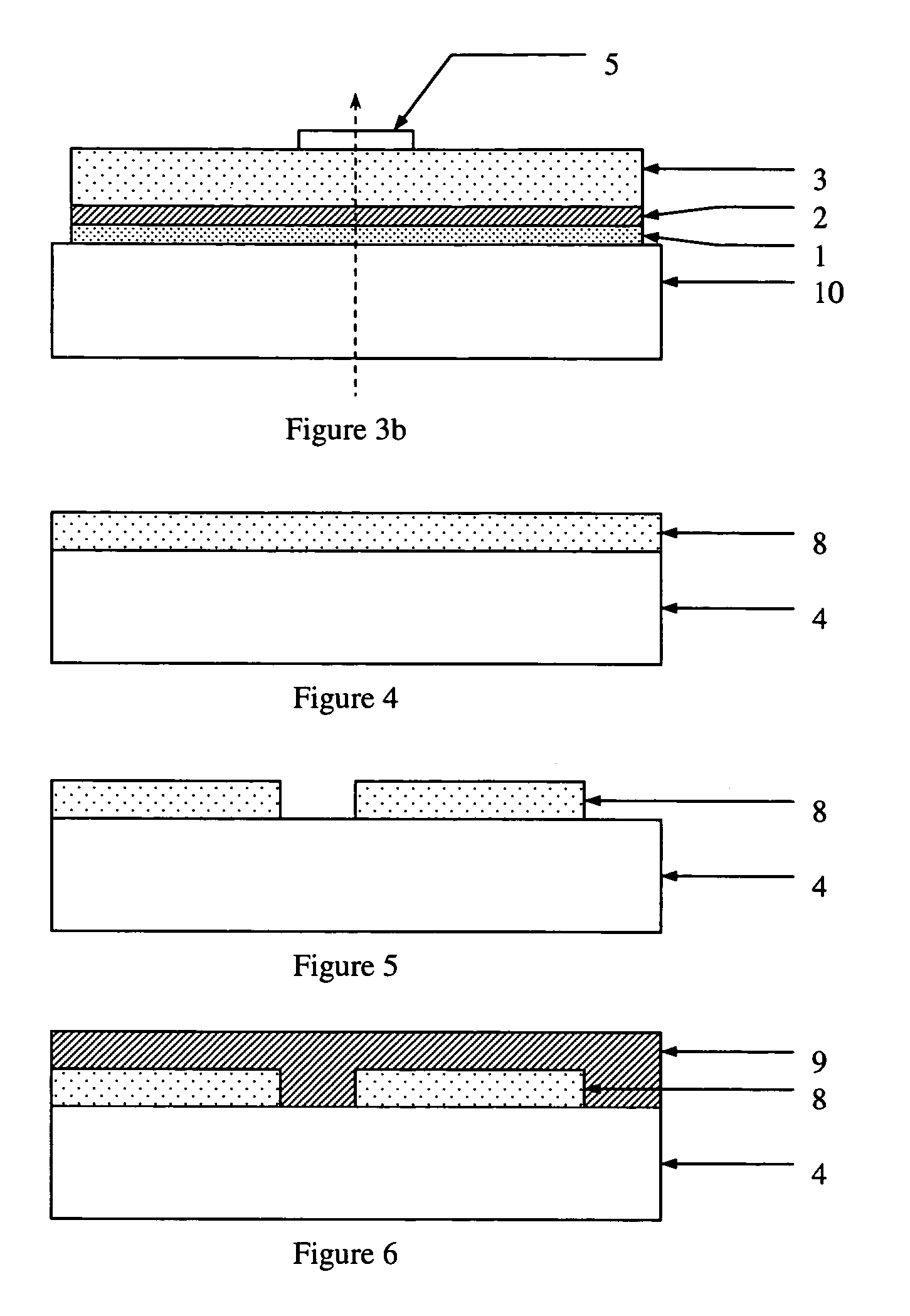Methods of processing of gallium nitride
a gallium nitride and processing method technology, applied in the direction of polycrystalline material growth, crystal growth process, manufacturing tools, etc., can solve the problems of difficult to obtain high-quality gan film on sic, poor thermal conductivity of sapphire, and high cost of si
- Summary
- Abstract
- Description
- Claims
- Application Information
AI Technical Summary
Benefits of technology
Problems solved by technology
Method used
Image
Examples
Embodiment Construction
[0041]In one embodiment, GaN epitaxial films grown for LED applications consist of three main, sequentially grown layers (FIG. 1), each of which can be further subdivide into numerous additional layers. The main layers consist of a moderately conductive p-doped GaN layer (1), a light emitting InGaN quantum well (either single or multiple) layer (2), and a conductive n-doped GaN layer (3). Due to the rectifying nature of the GaN p-n junction, such a GaN film can only conduct electrical current from the p-layer (1), through the quantum well (QW) layer (2), into the n-layer (3), not in the other direction. Light will emit from the QW layer only if sufficient current is passed through it, as described above. Consequently, a GaN LED device requires a contact pad to both the n- and p-layers (1,3) through which to deliver this activating current.
[0042]In the conventional GaN on sapphire LED (FIG. 2), some of the GaN must be removed to make contact to the n-layer (3) via the n-pad (5). This...
PUM
| Property | Measurement | Unit |
|---|---|---|
| melting point | aaaaa | aaaaa |
| size | aaaaa | aaaaa |
| wavelengths | aaaaa | aaaaa |
Abstract
Description
Claims
Application Information
 Login to View More
Login to View More - R&D
- Intellectual Property
- Life Sciences
- Materials
- Tech Scout
- Unparalleled Data Quality
- Higher Quality Content
- 60% Fewer Hallucinations
Browse by: Latest US Patents, China's latest patents, Technical Efficacy Thesaurus, Application Domain, Technology Topic, Popular Technical Reports.
© 2025 PatSnap. All rights reserved.Legal|Privacy policy|Modern Slavery Act Transparency Statement|Sitemap|About US| Contact US: help@patsnap.com



